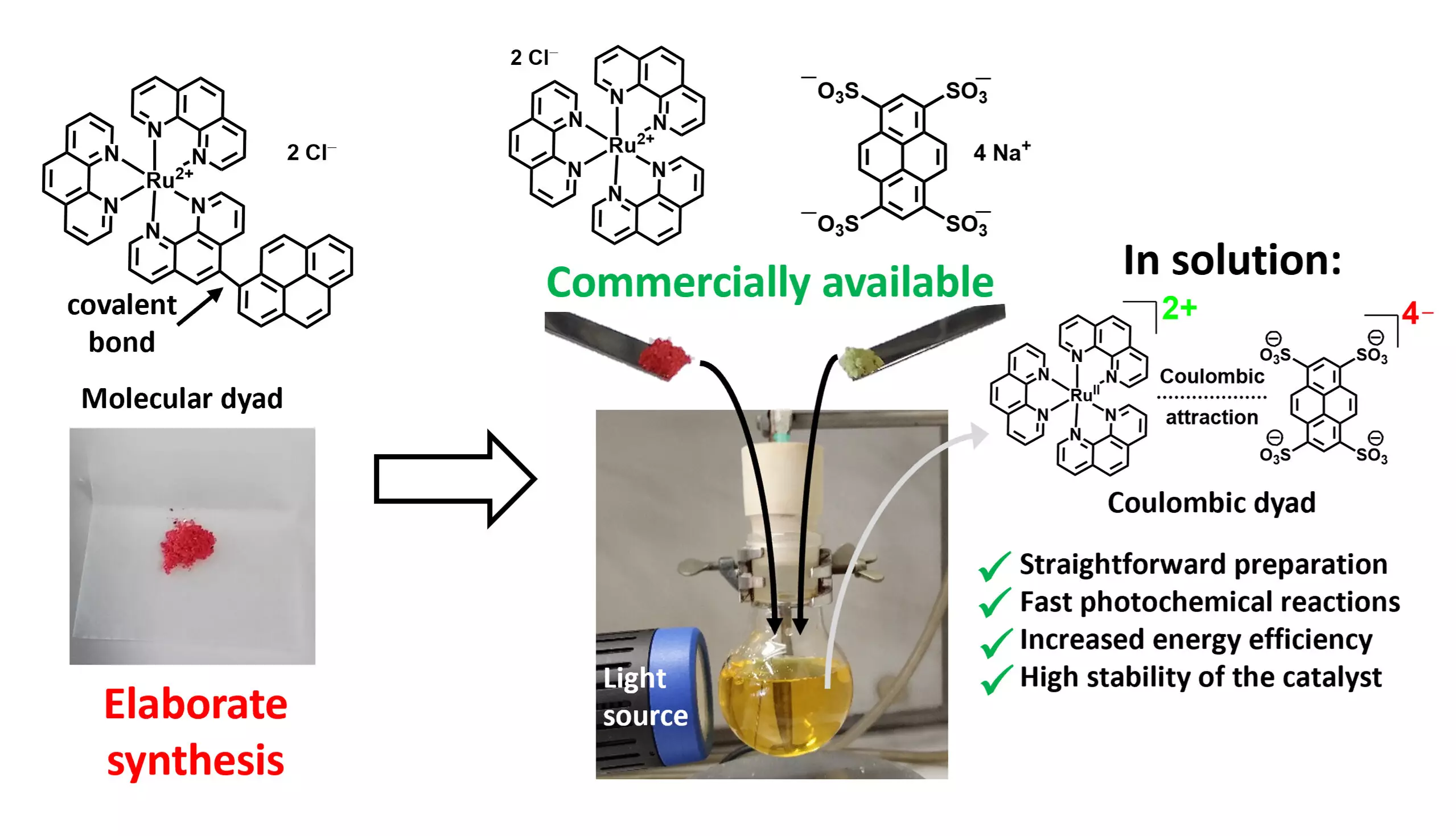Photocatalysis is a compelling scientific phenomenon that mimics the natural process of photosynthesis, in which light is harnessed to trigger catalytic reactions. This process has immense potential for environmental sustainability and energy efficiency, allowing chemical transformations that typically require high temperatures or extreme conditions to occur at milder levels. However, a significant barrier to its widespread application has been the low quantum efficiency of many photocatalysts, which limits their practical use in an economic context. Nonetheless, recent advances in photocatalyst design promise to enhance the efficiency of these light-driven reactions, paving the way for greener technologies.
Researchers have been exploring the creation of tailored photocatalysts, often referred to as molecular dyads. These specialized catalysts are typically constructed from two photoactive components connected by a covalent bond. While potent in theory, the complex synthesis methods required to produce these dyads have hindered their feasibility for large-scale applications. This reality highlights the need for more straightforward and cost-effective approaches to create photocatalysts that retain high efficiency without demanding excessive resources.
In a significant breakthrough, a team led by Professor Christoph Kerzig at Johannes Gutenberg University Mainz has uncovered a novel strategy for synthesizing photocatalysts that marry simplicity with performance. By mixing two commercially available salts, they exploit the attractive electrostatic interactions—similar to those seen in table salt—between the photoactive units. This ion-pair formation allows for a synergistic interaction without the need for elaborate multi-step synthesis processes. The result is a highly efficient photocatalyst that is both economical and environmentally friendly.
Current research in photocatalysis often focuses on transforming non-precious metals to emulate the performance of established expensive elements like iridium or ruthenium. However, this often involves intricate ligands that complicate production and drive up costs. The novel approach advocated by Kerzig and his team, in contrast, requires only the addition of inexpensive additives to existing photocatalysts. This not only promises to enhance the durability and efficiency of these catalysts but also reduces the overall quantity needed for effective reactions, thus addressing one of the key challenges of using materials that are abundant in nature.
Insights from Spectroscopy and Laser Technology
The researchers used cutting-edge spectroscopy techniques informed by large-scale laser devices to refine and optimize their Coulombic dyads. This comprehensive approach allowed them to scrutinize every step of the light absorption process and molecular activation, significantly improving their understanding of the catalytic mechanisms at play. Initial reactions have already demonstrated promising results, such as the formation of new carbon-carbon bonds and the photooxygenation of renewable wood-derived materials.
Early experiments demonstrate that this new class of photocatalysts not only matches but may exceed the effectiveness of higher-cost alternatives. They can utilize both sunlight and LED-generated light, making them versatile for various applications. Their findings suggest that a wide range of ionic photocatalysts could potentially benefit from this innovative concept, further bolstering hopes for industrial-scale applications.
The researchers’ emphasis on solvent effects and the development of a toolbox approach to design different Coulombic dyads highlights an exciting avenue for future research. This methodology signifies the potential for creating a whole new category of efficient photocatalysts tailored to specific reactions. As the world increasingly pivots towards sustainable practices, advancements in photocatalytic technology may play a pivotal role in developing green chemistry solutions capable of minimizing our ecological footprint while maximizing chemical production efficiency. By continuing on this path, we could soon observe the translation of laboratory successes into real-world applications that contribute to a more sustainable future.


Leave a Reply